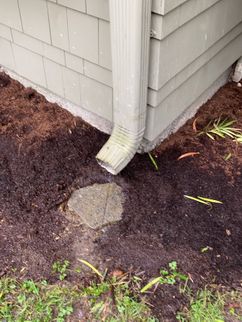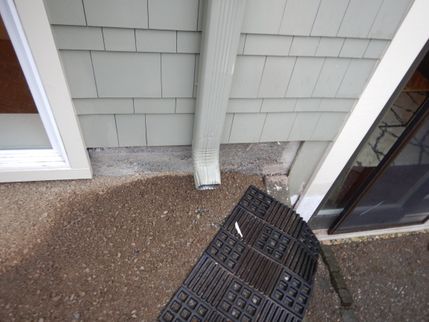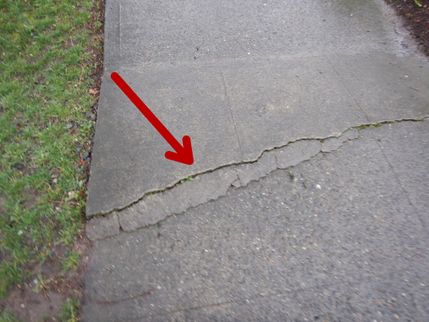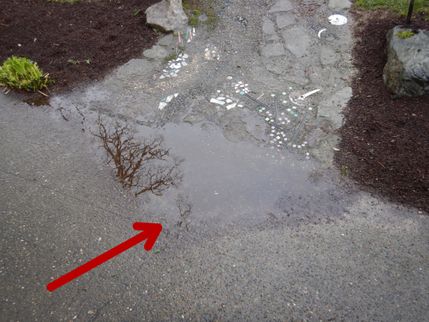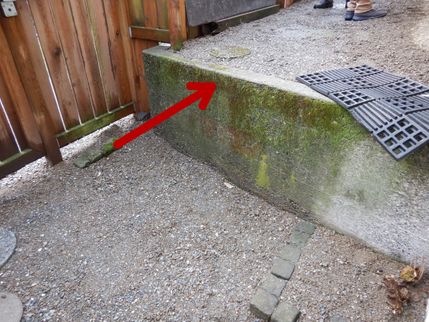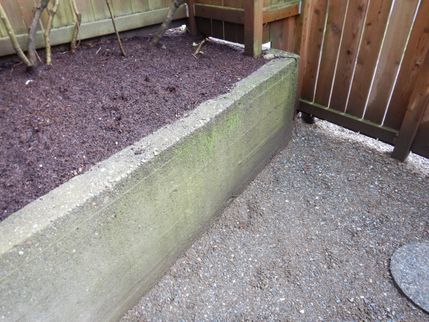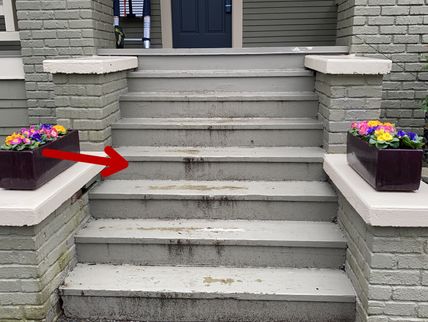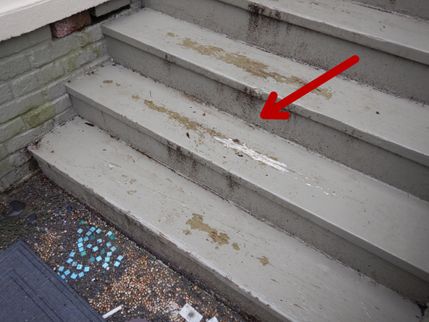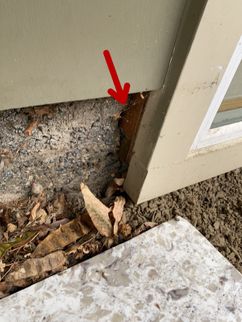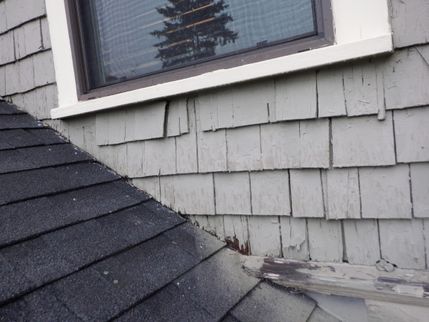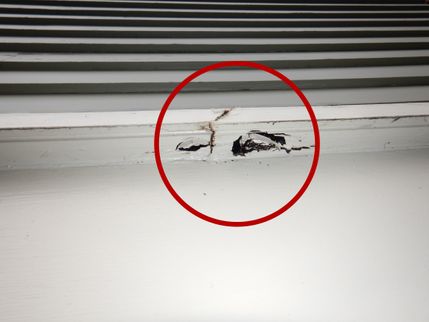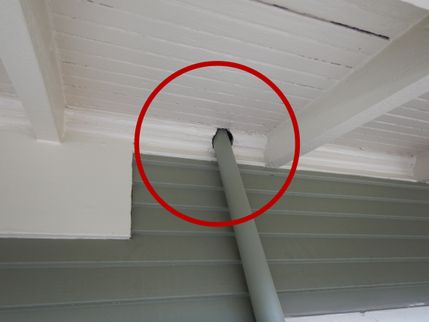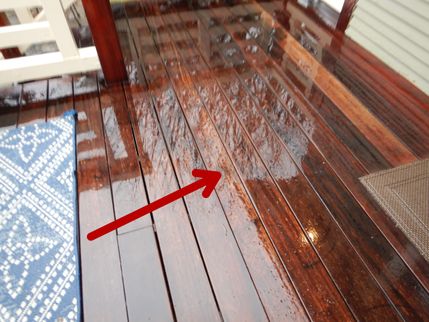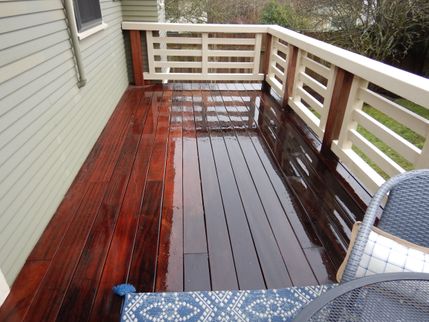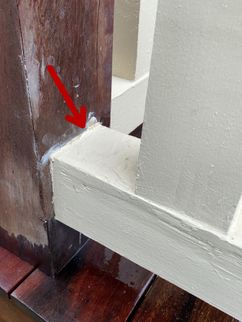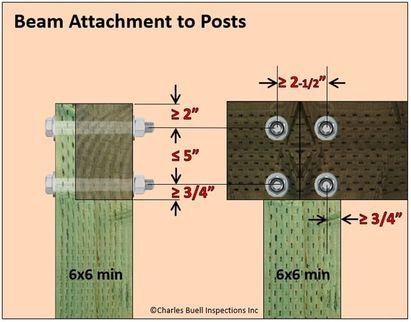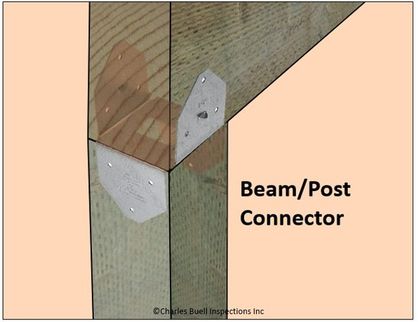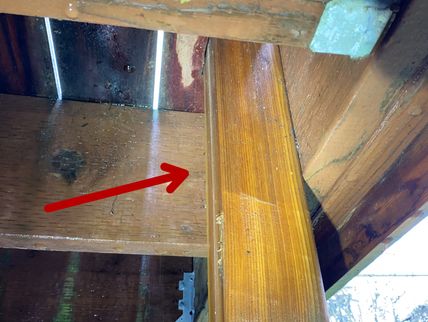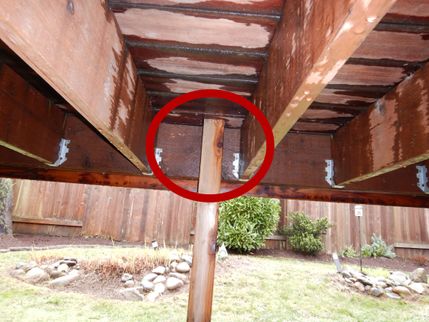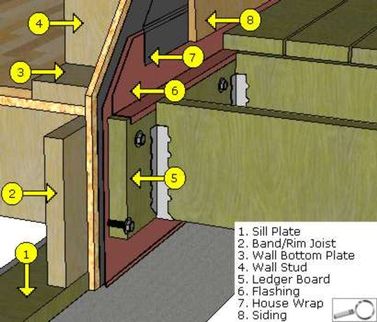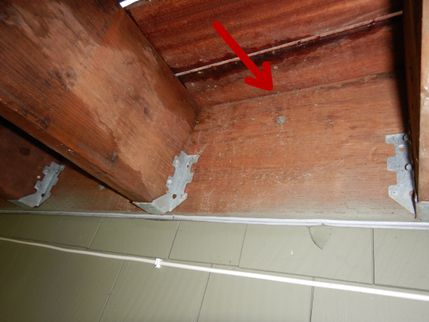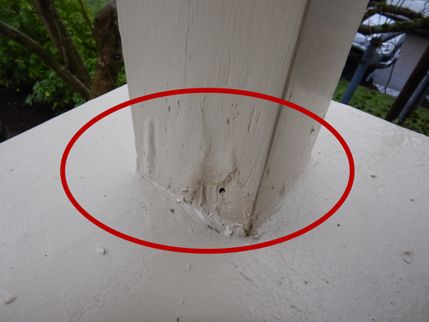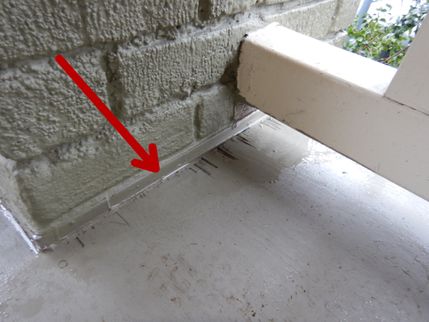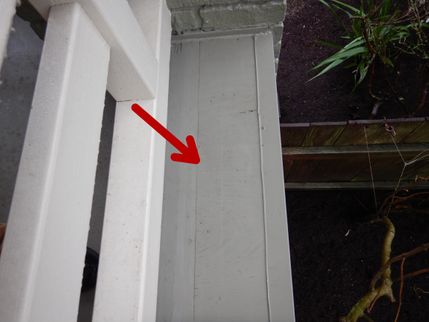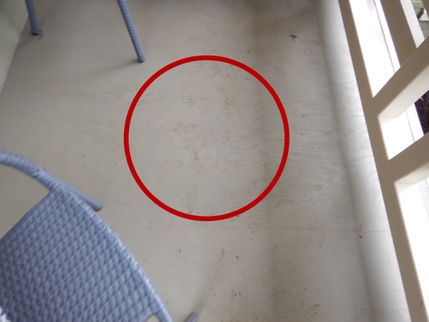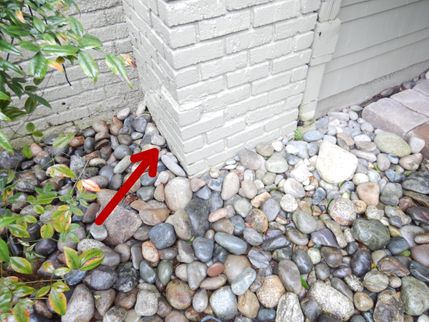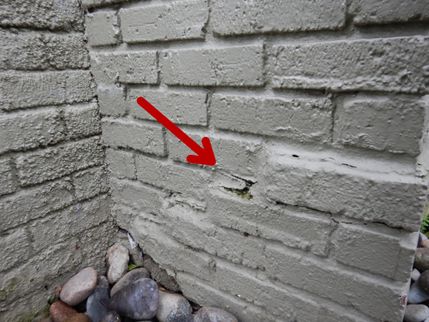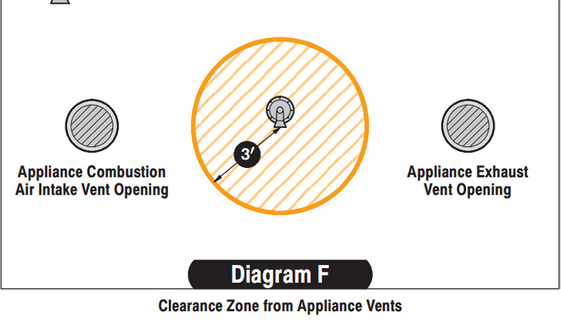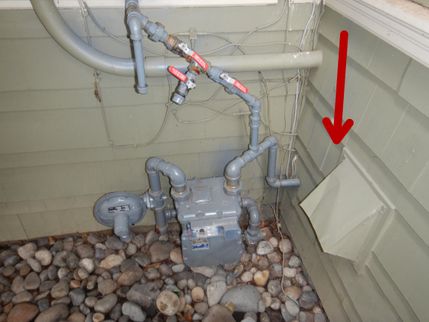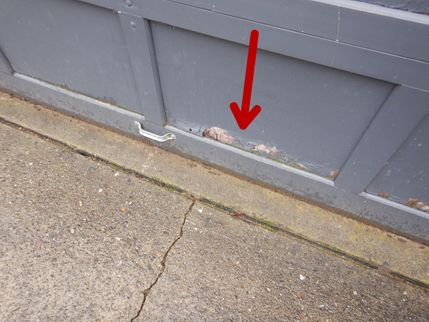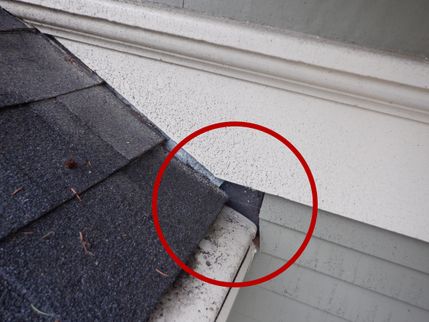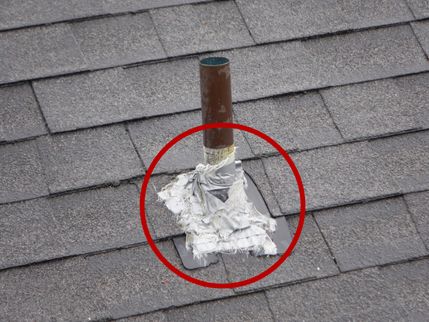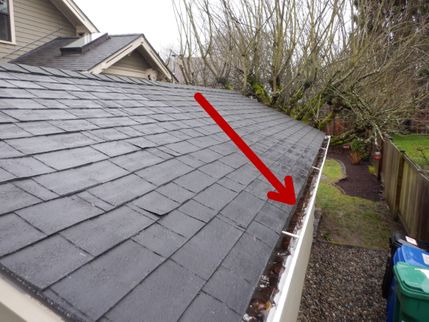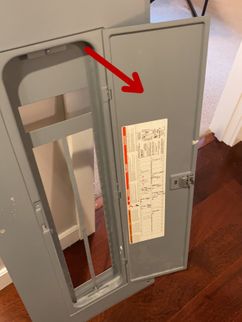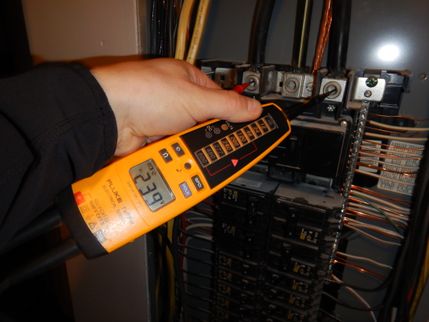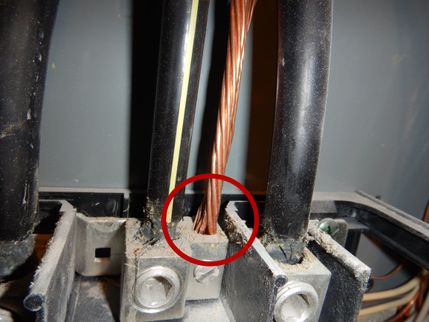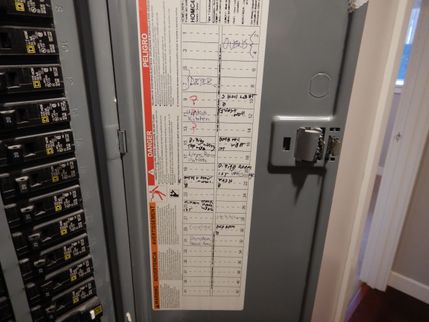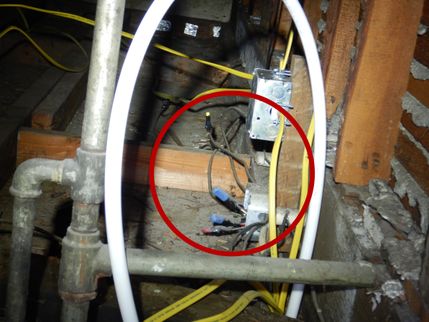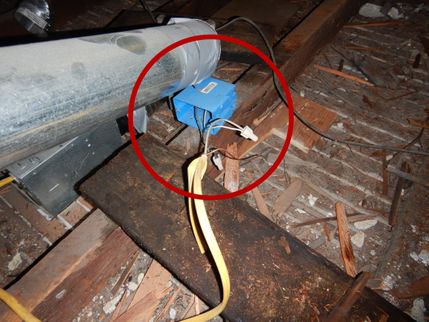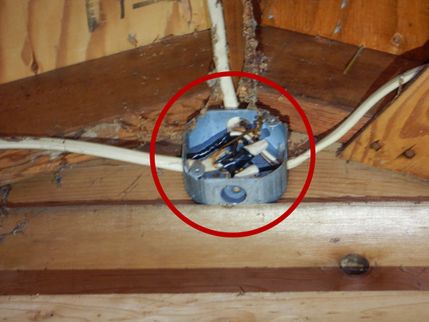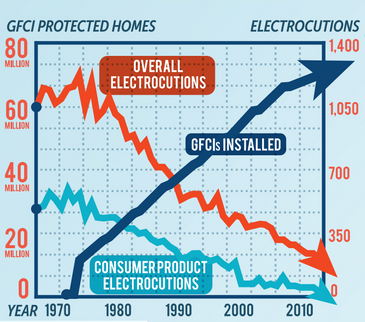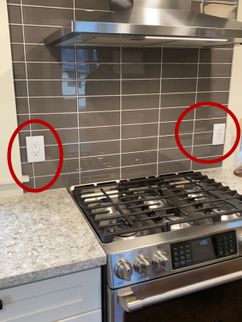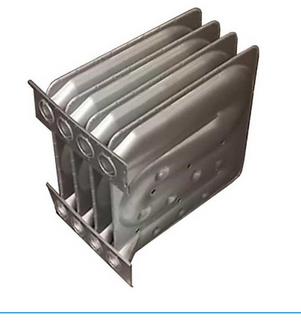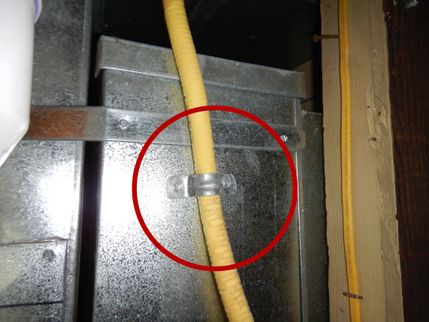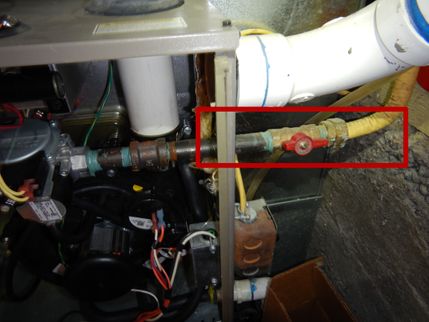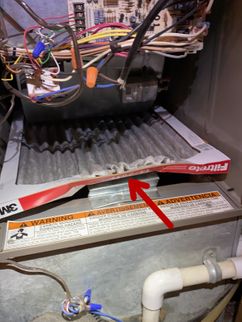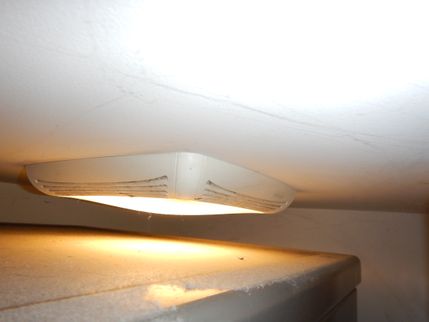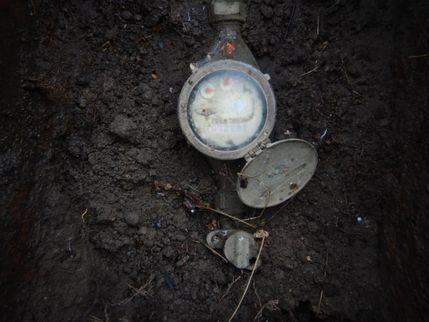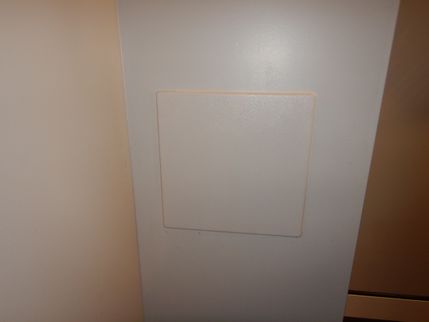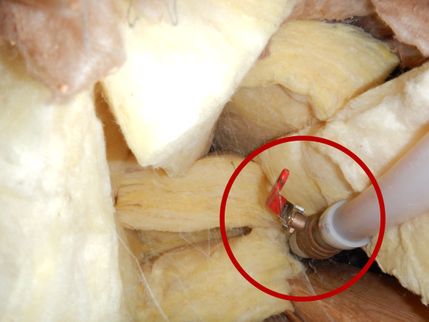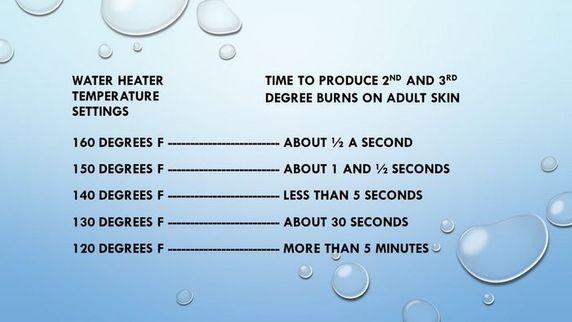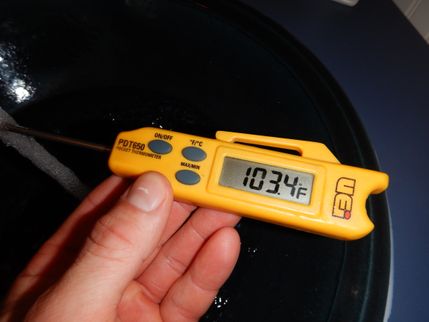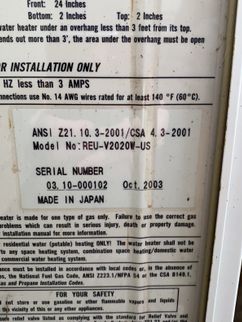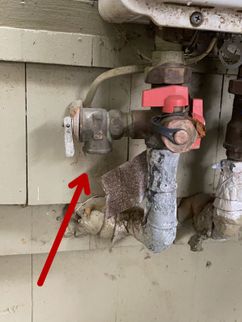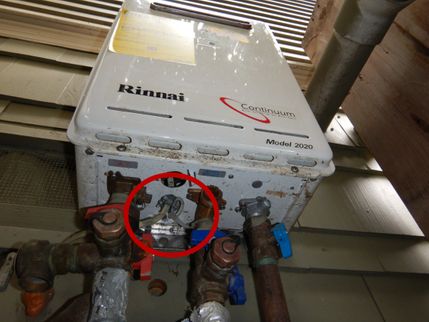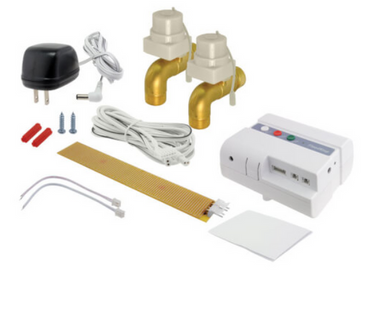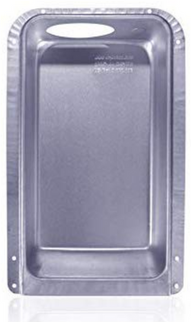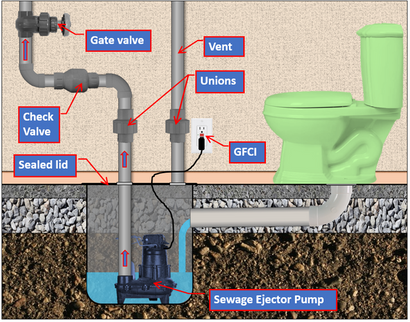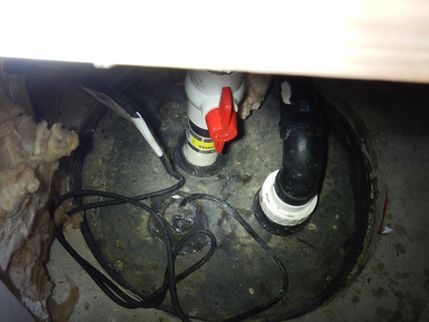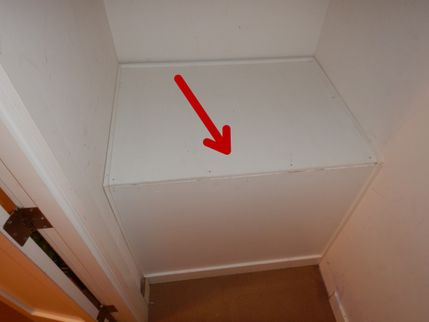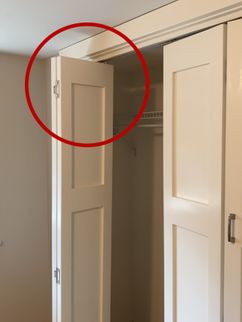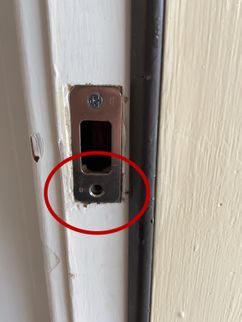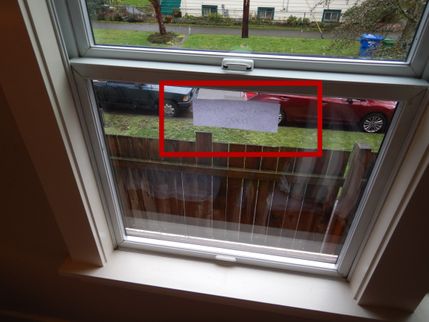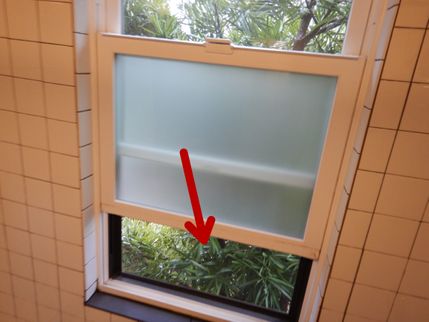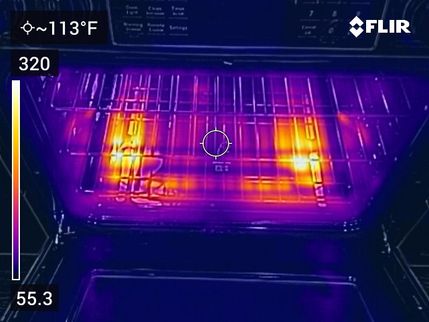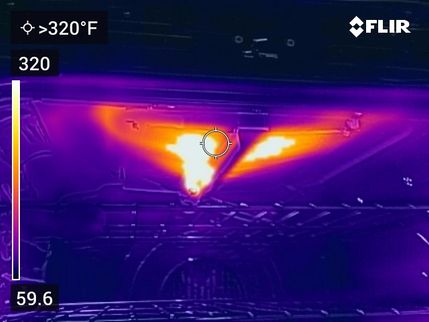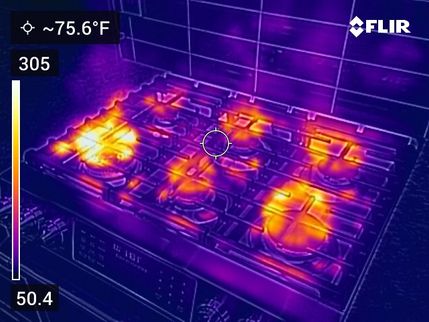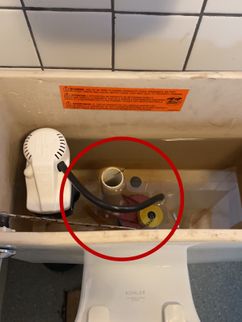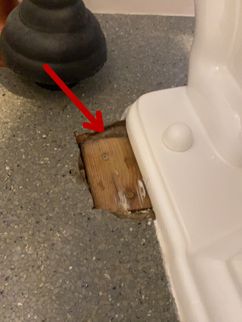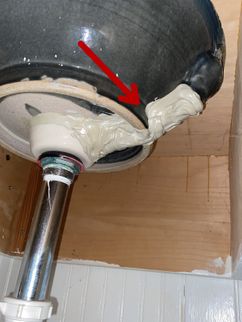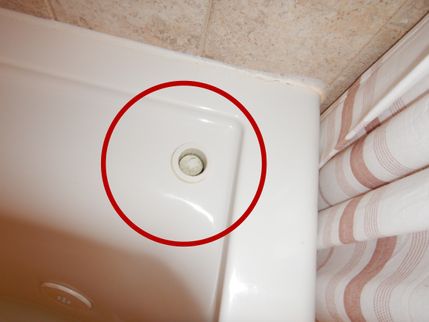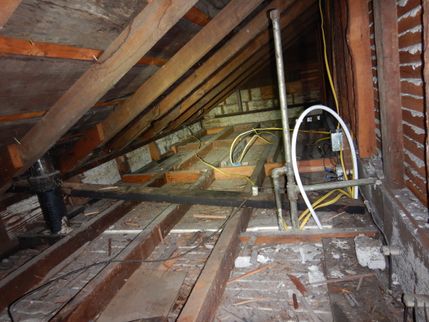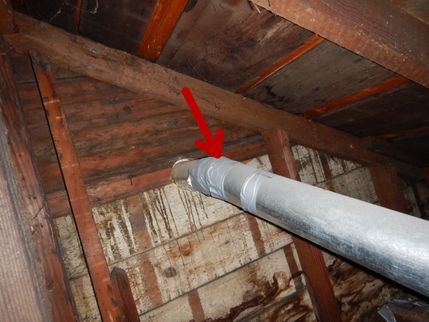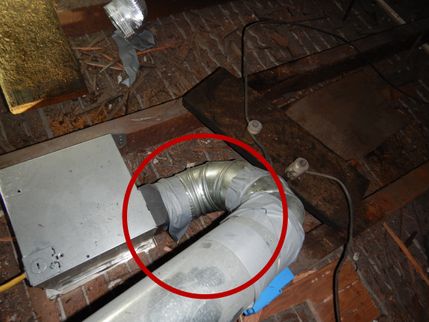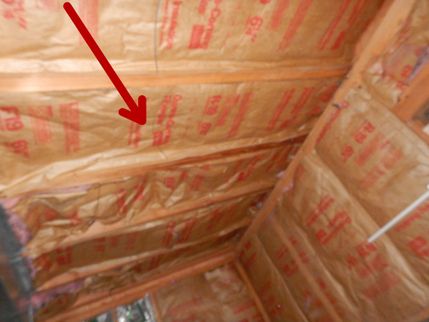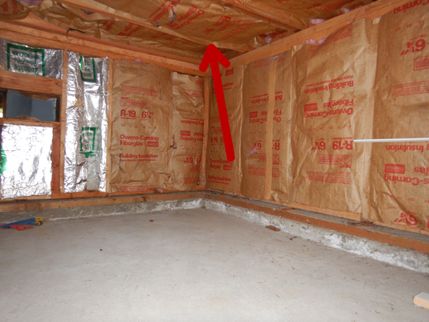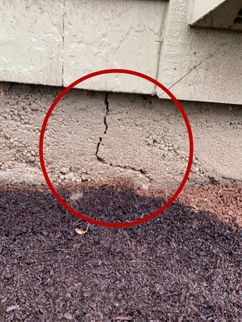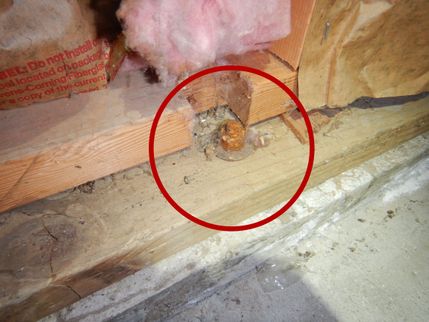The Scope and Purpose of a Home Inspection
Purchasing property involves risk
The purpose of a home inspection is to help reduce the risk associated with the purchase of a structure by providing a professional opinion about the overall condition of the structure. A home inspection is a limited visual inspection and it cannot eliminate this risk. Some homes present more risks than others. We cannot control this, but we try to help educate you about what we don’t know during the inspection process. This is more difficult to convey in a report and one of many reasons why we recommend that you attend the inspection.
A home inspection is not an insurance policy
This report does not substitute for or serve as a warranty or guarantee of any kind. Home warranties can be purchased separately from insuring firms that provide this service.
A home inspection is visual and not destructive
The descriptions and observations in this report are based on a visual inspection of the structure. We inspect the aspects of the structure that can be viewed without dismantling, damaging or disfiguring the structure and without moving furniture and interior furnishings. Areas that are concealed, hidden or inaccessible to view are not covered by this inspection. Some systems cannot be tested during this inspection as testing risks damaging the building. For example, overflow drains on bathtubs are generally not tested because if they were found to be leaking they could damage the finishes below. Our procedures involve non-invasive investigation and non-destructive testing which will limit the scope of the inspection.
This is not an inspection for code compliance
This inspection and report are not intended for city / local code compliance. During the construction process structures are inspected for code compliance by municipal inspectors. Framing is open at this time and conditions can be fully viewed. Framing is not open during inspections of finished homes, and this limits the inspection. All houses fall out of code compliance shortly after they are built, as the codes continually change. National codes are augmented at least every three years for all of the varying disciplines. Municipalities can choose to adopt and phase in sections of the codes on their own timetables. There are generally no requirements to bring older homes into compliance unless substantial renovation is being done.
Environmental/Mold Exclusions
The reported or actual health effects of many potentially harmful, toxic or environmentally hazardous elements that may be found in building materials or in the air, soil, water in and/or around any house are varied, and, in some cases controversial. A home inspection does not include the detection, identification or analysis of any such elements or related concerns such as, but not limited to, mold, allergens, legal/illegal drugs and other biological contaminants, radon, , bed bugs, cockroaches, fleas, lice, formaldehyde, asbestos, lead, electromagnetic fields, carbon monoxide, insecticides, Chinese drywall, refrigerants and fuel oils. Furthermore, no evaluations are performed to determine the effectiveness or appropriateness of any method or system (e.g., water filter, radon mitigation, etc.), designed to prevent or remove any hazardous or unwanted materials or elements. An environmental health specialist should be contacted for evaluation of any potential health or environmental concerns. The noting of the presence of materials commonly considered to contain asbestos, formaldehyde, lead, mold etc in the inspection report, should not be construed to mean the inspector is inspecting for these things but instead should be seen as a "heads-up" regarding these materials and further evaluation by qualified professional may be warranted.
This is just our opinion and just for you
The contents of this report are for the sole use of the client named above and no other person or party may rely on this report for any reason or purpose whatsoever without the prior written consent of the inspector who authored the report. Any person or party who chooses to rely on this report for any reason or purpose whatsoever without the express written consent of the inspector does so at their own risk and by doing so without the prior written consent of the inspector waives any claim of error or deficiency in this report.
Construction techniques and standards vary. There is no one way to build a house or install a system in a house. The observations in this report are the opinions of the home inspector. Other inspectors and contractors are likely to have some differing opinions. You are welcome to seek opinions from other professionals.
The scope of this inspection
The inspection and report are intended to provide the client with information regarding the condition of the systems and components of the property as observed at the time of the inspection. The inspector examines the readily accessible systems and components using normal operating controls. The inspection is not technically exhaustive and will not identify concealed conditions or latent defects. Any comments offered by the INSPECTOR that could be construed as over or beyond the standards of practice or the language of this contract, are offered as a professional courtesy. Refer to the Washington State, Standards of Practice and/or Pre-Inspection Agreement for additional information regarding the scope and limitations of the inspection. The Standards of Practice are linked below and describe the "minimum" standards a Licensed Washington State Home Inspector must adhere to: http://app.leg.wa.gov/RCW/default.aspx?cite=18.280.030.
All homes are likely to have some faults which may range from cosmetic defects to major safety hazards. Not all defects will be found. While some minor deficiencies may be mentioned, the emphasis of this report is to inform the buyer of the property condition by detecting deficiencies or circumstances that may affect the structural integrity of the building and its components and its safe use as a residence.
You are encouraged to obtain competitive estimates for major repair needs. Safety and health issues should be addressed promptly. It is recommended that all corrective work, other than routine maintenance activities, be performed by qualified licensed contractors.
It is beyond the scope of the Standard Home Inspection to identify components within the home that may have been part of a "manufacturer's recall". Mention of specific recalls within this report must not be construed to mean that all such items have been identified, or that such identification is part of a Standard Home Inspection. When possible, appliance Model Numbers and Serial Numbers are included in the report and can be used to check for recall related issues. If you have any question about specific appliances, information can be found at the CPSC (Consumer Products Safety Commission) website: https://www.cpsc.gov, or contact the manufacturer directly.
It is recommended that you obtain as much history as is available concerning this property. This historical information may include copies of any seller's disclosures, previous inspection or engineering reports, reports performed for or by relocation companies, municipal inspection departments, lenders, insurers and appraisers. You should attempt to determine whether repairs, renovation, remodeling, additions or other such activities have taken place at this property, and this report will attempt to identify such items when possible.
Ranges, Dish Washers, and Refrigerators (and the like) are typically tested for basic function (Do they turn on). No assertions are made as to how well they function. Microwave ovens, clothes washers/dryers are not operated.
Throughout this report, comments will be made as to the presence or absence of components or parts of components. This must not be construed to mean that these components or parts of components exist (or don't exist) in concealed areas or behind finished surfaces. For example: if foundation bolting was seen in one area, it does not mean that the bolting exists (or doesn't exist) in areas that are concealed. Also if an item was noted as "not being visible," that should not be construed to mean that none of whatever was "not visible" does not exist on the premises---it just means none was noted at the time of inspection and should be seen as a "heads-up" that the concern or condition might be present but hidden, or that the conditions that would allow its presence to be known was not replicated at the time of inspection.
Many of the non-narrative observations/documentation detailed in the report that are related to more "cosmetic" issues should not be construed as "all inclusive" but should instead be seen in as "suggestive" or a "guideline" of conditions that may exist elsewhere in the home. It is not the focus of the report to comment extensively on cosmetic issues, but I do make note of them at times to help complete the "snap-shot" of the home at the time of inspection. For example, "nail-pops" seen in one room are likely to be seen (and should be anticipated) in other rooms even though I may not have noted them in the report.
Throughout the report I may make recommendations as to possible repairs. These recommendations are not intended to be substitutes or construed to be more appropriate than the recommendations of the professionals making the repairs. Conflicts in recommendations should be resolved prior to repairs being made.
Who should make repairs and what should their qualifications be?
Contractor qualifications: In the text of the report, in some instances, I recommend that work be done by a "qualified" person or "qualified" parties. I consider qualified parties, in licensed trades, to be those individuals who hold the necessary licenses to legally work in their profession -- licensed electricians, licensed pest control applicators, licensed plumbers, licensed HVAC professionals, licensed engineers, licensed general contractors, etc. In instances where a task may not, typically, need to be done by a person with a license, my recommendation is to hire an individual to do the work who is, based on past training, experience or expertise, qualified to further evaluate the condition or problem listed in the report and to then make appropriate repairs.
Photography/Infrared and Moisture meters used
Digital photographs, thermographs and illustrations may be included in this report. If included, their purpose is to better illustrate an observation or recommendation. No degree of importance should be inferred by the presence or absence of photos and illustrations. Some pictures will undergo lightening, darkening, cropping and have callouts and other "overlays" present, but the image itself will not be altered unless specifically noted on the picture. The use of infrared thermography (IR) must not be construed to mean that a full thermal survey of the structure was done. The use of IR is primarily for recording thermal differences to show the function or lack of function of heating and cooling of HVAC equipment; and, anomalies associated with temperature differences sometimes produced by water leaks, air infiltration etc. IR during a home inspection is mainly a qualitative evaluation and, in most cases, "thermal tuning" will not have been performed and therefor temperatures present on any thermal images in the report should not be seen as an absolute temperature but only "relative temperature."
Throughout the report, reference may be made to moisture conditions and percentages of moisture content. These moisture readings are obtained by the use of a Protimeter Surveymaster Moisture Meter.
Your participation is requested
Your presence is requested during this inspection. A written report will not substitute for all the possible information that can be conveyed verbally by a shared visual observation of the conditions of the property. If you were not present during the inspection, you are urged to contact the inspector for a verbal consultation. If you choose not to consult with the inspector, the inspection company cannot be responsible for misinterpretation of the report.
How to Read This Report
Getting the Information to You
This report is designed to deliver important and technical information in a way that is easy for anyone to access and understand. If you are in a hurry, you can take a quick look at our "Summary Page” and quickly get critical information for important decision making. However, we strongly recommend that you take the time to read the full Report, which includes digital photographs, captions, diagrams, descriptions, videos and hot links to additional information.
The best way to get the layers of information that are presented in this report is to read your report online, which will allow you to expand your learning about your house. You will notice some words or series of words highlighted in blue and underlined – clicking on these will provide you with a link to additional information.
This report can also be printed on paper or to a PDF document.
Chapters and Sections
This report is divided into chapters that parcel the home into logical inspection components. Each chapter is broken into sections that relate to a specific system or component of the home. You can navigate between chapters with the click of a button on the left side margin.
Most sections will contain some descriptive information done in black font. Observation narrative, done in colored boxes, will be included if a system or component is found to be significantly deficient in some way or if we wish to provide helpful additional information about the system or the scope of our inspection. If a system or component of the home was deemed to be in satisfactory or serviceable condition, there may be no narrative observation comments in that section and it may simply say “tested,” or “inspected.”
Observation Labels
All narrative observations are colored, numbered and labeled to help you find, refer to, and understand the severity of the observation. Observation colors and labels used in this report are:
- Major Concern:Repair items that may cost significant money to correct now or in the near future, or items that require immediate attention to prevent additional damage or eliminate safety hazards.
- Repair:Repair and maintenance items noted during inspection. Please note that some repair items can be expensive to correct such as re-finishing hardwood floors, but are considered simply repair items due to their cosmetic nature.
- Recommended Maintenance:These are repair items that should be considered "routine home ownership items," such as servicing the furnace, cleaning the gutters or changing the air filters in the furnace.
- Improvements & Upgrades:Observations that are not necessarily defects, but which could be improved for safety, efficiency, or reliability reasons.
- Monitor:Items that should be watched to see if correction may be needed in the future.
- Due Diligence:Observation such as a buried oil tank that may require further investigation to determine the severity and / or urgency of repair.
- Future Project:A repair that may be deferred for some time but should be on the radar for repair or replacement in the near future.
- Efficiency:Denotes observations that are needed to make the home more energy efficient as well as to bring the home up to modern insulation standards. This category typically includes windows and insulation. Other items, such as lighting and appliances, are not inspected for their energy status.
- Homeowner Association:These items should be brought to the attention of the Homeowners Association for corrections or information.
- Repaired Item:Items that were initially an issue but have since been completed. Please consult the seller/contractor for any additional invoices for the work performed.
- Inspection Notes & Limitations:Refers to aside information and /or any comments elaborating on descriptions of systems in the home or limitations to the home inspection.
- Description:Detailed description of various aspects of the property noted during the inspection.
Summary Page
The Summary Page is designed as a bulleted overview of all the observations noted during inspection. This helpful overview is not a substitution for reading the entire inspection report. The entire report must be read to get a complete understanding of this inspection report as the Summary Page does not include photographs or photo captions.
Moisture Meter Testing
Where moisture meter testing is indicated in this report a Protimeter Surveymaster Dual Function was used.
Summary
Repairs
- G-1 Grounds:
Downspouts are discharging adjacent to the foundation. This can cause foundation settlement or basement / crawl space moisture problems. Make sure all downspouts discharge into a proper tight-line system that diverts water at least 5 feet away from the foundation.
- G-2 Grounds:
Cracks were noted in walkway flatwork with areas of moisture accumulation noted. No immediate repair appears necessary, though water will continue to deteriorate the surface until the walkway is repaired or replaced.
- G-3 Grounds:
All trees, branches and vegetation should be pruned at least six feet away from the building to eliminate a condition conducive to wood destroying organisms and a path for rodent entry.
- G-5 Grounds:
The guardrail system for the exterior stairs is missing. All stairs greater than three steps should have a guardrail with openings no larger than 4 inches - railing should be 36 inches high and strong enough to hold a falling adult. The materials were also exposed due to peeling paint and will need to be sealed. Hire a licensed general contractor to further evaluate and repair.
- ED1-1 Exteriors and Decks:
Localized paint failure was noted throughout the exterior - see especially where exposed to the weather. I recommend a painting contractor reseal and repair all areas as needed.
- ED1-2 Exteriors and Decks:
An area of exposed window framing was noted at the left side. This areas will need to be painted and blocked from pest entry.
- ED1-3 Exteriors and Decks:
Localized siding repairs are needed to the exterior - I noted areas of moisture damaged and heavily worn materials on the weather side of the dwelling. Hire a licensed general contractor to further evaluate and repair all damaged siding as needed.
- ED1-4 Exteriors and Decks:
Opening were noted in the eaves of the house that need to be sealed up to exclude rodents from getting into the attic.
- ED1-6 Exteriors and Decks:
The wood decking on this deck needs to be re-stained to preserve the wood and prevent the wood from becoming slippery. The most important deck maintenance for wood decks is regular cleaning to prevent the decking from becoming slippery. Additional protection can be added by using a deck stain. Painting is never recommended as this can trap water in the decking and facilitate decay.
- ED1-7 Exteriors and Decks:
Wood decay was found in parts of the guardrail system. This will require replacement of the deck guardrail system in the near term. At the moment, the railing still appeared to have some useful life but I would budget to replace this railing system soon.
- ED1-8 Exteriors and Decks:
The deck beams do no appear to be reliably connected to the posts. When not done to normal standards it is difficult to predict how this connection will perform. Have this further evaluated and repaired as recommended by a qualified general contractor.
- ED1-9 Exteriors and Decks:
No flashings were noted between the deck ledger board and the home. This could allow water to get trapped between the deck and the house, causing rot and a conducive pest condition. This can be a difficult retrofit once the deck is constructed. No water damage was visible, but this could cause long term moisture control problems at the deck.
- ED1-10 Exteriors and Decks:
A few conditions were noted with the entry porch/deck. I noted common plywood used for the decking (walking surface) that was not properly sealed with some loose/damaged areas, as well as some settlement conditions. I also observed wood decayed support posts that had repair attempts noted. I recommend the decking be properly sealed to deny moisture entry and any damaged support posts be repaired as needed.
- Wood decayed areas.
- Damaged decking materials.
- Water accumulation observed.
- Loose areas of decking that need to be secured.
- Settlement noted at the brick materials.
- Step cracking and displacement noted.
- FSD-2 Fuel Storage and Distribution:
The gas meter pressure regulator is too close to the appliance vent. It must be at least 3 feet away. Consult with your gas provider for an approved repair. This typically involves using an extension on the breather tube.
- G2-1 Garage:
Wood decay was noted at the base of the overhead garage door. Repair or replace this door.
- G2-3 Garage:
Repair the damaged weather stripping on the bottom of the garage door as we noted water entry near the areas. This is important to prevent water and rodent entry.
- RCG2-1 Roof, Chimney and Gutters:
Repairs are recommended to prolong the reliable and useful service life of this roof, both the main house and garage. This is an older roof, but there appears to be useful remaining service life. The roofing material on this building is done in an architectural grade composition shingle. These shingles are often rated as 25-30 year shingles, though I find in practice, as a roof assembly, 18-22 years is more realistic depending on the quality of the installation, the amount of exposure and the pitch of the roof. Hire a licensed roofing contractor to further evaluate and repair this roof to ensure reliable roof performance as it is nearing the end of its life span. Examples of observations and repair items noted during inspection include:
- Roofing materials were in contact with the siding.
- Several areas of missing kick out flashing noted.
- Damaged shingles need replacement.
- Worn and damaged plumbing flashing at several areas.
- Improper repair attempts were also noted.
- Additional areas of damaged shingles.
- RCG2-2 Roof, Chimney and Gutters:
The gutters and downspouts are leaking and poorly sloped to drain. While repair is possible, replacement with seamless aluminum gutters is recommended as the cost to clean and repair these gutters will exceed their value.
- ES1-5 Electric Service:
Hire a licensed electrician to correct the double lugged neutral or grounded conductors in the electric panel - this is when two conductors share the same lug. Each grounded conductor shall terminate within a panelboard in an individual terminal that is not also used for another conductor. Double lugged conductors risk poorly protected conductors that are more vulnerable to arcing and overheating. This requires additional evaluation by an electrician.
- EDFW1-1 Electric Distribution and Finish Wiring:
This home still appears to employ some knob and tube wiring. This is an old soldered style of wiring that would not meet today's standards. Some insurance companies will not insure homes with this type of wiring. I recommend consulting with a licensed electrician about ways to improve this system and take pressure off existing knob and tube. Installation of additional circuits and of arc fault protected breakers can help make the system safer and more reliable. Complete removal and replacement of all knob and tube is recommended but considerably more expensive and not always necessary. Many homes of this age in this area still employ at least a few knob and tube circuits. You need to update to a level you feel comfortable with.
- EDFW1-2 Electric Distribution and Finish Wiring:
The open electrical junction box needs to be covered for improved safety - see attic. This is as simple as installing a cover plate over the box to protect the wiring. Sometimes, an extension ring is needed if finishes are covering the box. Repair as needed for improved safety.
- EDFW1-3 Electric Distribution and Finish Wiring:
The use of GFCI (Ground Fault Circuit Interruption) protection is inconsistent with modern minimum standards for safety - see kitchen countertops. GFCI protection is recommended for the electrical receptacles in the following locations: the two dedicated kitchen appliance circuits, all receptacles within 6 feet of a sink, bathrooms, exterior, garage, unfinished basements, laundry and all wet and damp locations. GFCI's protect against electrocution by limiting the duration of an electrical shock. These are an important modern safety feature that have proven to save lives. Hire a licensed electrician to further evaluate and update GFCI protection for improved safety.
- EDFW1-4 Electric Distribution and Finish Wiring:
The exterior receptacle covers are damaged and require replacement. Use the modern "in-use" receptacle covers designed for outdoor use which employ large plastic water-resistant covers.
- HCFV-3 Heating, Cooling, Fireplaces and Ventilation:
The furnace intake system was located too close to the exhaust system for a nearby tank less water heater as outlined by the manufacture. I recommend modification to this installation by a licensed HVAC contractor.
- HCFV-6 Heating, Cooling, Fireplaces and Ventilation:
The laundry room fan did not operate when tested. This fan will need to be repaired in order to remove humid air from the area during laundry usage.
- WH-1 Water Heater:
An expansion tank is recommended for the water heater; these are required if the house has a closed plumbing system. Expansion tanks help reduce pressure on the plumbing system by creating a buffer or a place for water to expand into as water swells during thermal expansion. Installation of expansion or pressure tanks is modern installation practice and will be required if a pressure reducing valve has been installed on a public water supply. Consult with a qualified plumber to install.
- WH-2 Water Heater:
The discharge tube for the water heater temperature and pressure relief valve (TPRV) is not correctly installed - see attached link. This is a potential safety hazard. Ideally, the discharge tube for a relief valve:
- Terminates to an exterior location or above a drain, though this is not always possible
- Terminates between 6 and 24-inches off the ground (UPC)
- Slopes to drain to prevent water pooling inside the discharge tube
- Is not made from pipe with an inside diameter less than 3/4 on an inch
- Terminates to a visible location that can be monitored for leaks and discharges
- Does not have a threaded termination point which would prevent accidental capping of this important discharge
- Does not terminate into a drain pan
I recommend having this relief valve discharge tube further investigated and repaired as recommended by a licensed plumber.
- WH-4 Water Heater:
The tankless water heater wiring was exposed and improperly secured at the units connection. Hire a licensed electrical contractor to repair these conditions.
- I-5 Interior:
The vinyl windows in this home will need an all-around tune-up. I noted a few windows that are stiff to operate, would not stay in the upright position, and so on. I recommend adjusting and repairing all needed windows.
- MFB-1 Main Floor Bathroom:
The fill pipe for the toilet was loose at the main floor bathroom. Secure this area to the fill pipe as needed.
- MFB-2 Main Floor Bathroom:
A missing portion of the flooring was noted around a toilet. This may be from a previous repair and/or similar condition. Repair of the exposed areas is needed and consulting with the seller as to a reason for this is recommended.
- UB-1 Upstairs Bathroom:
The overflow was heavily caulked - possibly due to a previous leak. The unit was tested and found to be functional, although the repair is improper.
- BB1-1 Basement Bathroom:
The jetted bathtub did not respond to testing. This pump may be broken or the switch could be stuck. Have this jetted tub repaired or replaced as needed by a licensed plumbing contractor.
- A-2 Attic:
The attic insulation was missing a the visible areas. Modern standards recommend R-49 on the floor and R-21 on walls. R-value is the measure of resistance to heat loss; the higher the R-value the better the insulation. During insulation repairs it is best practices to implement any air seal-up repairs to seal air leakage. Also, be sure you have completed any wiring or other projects that are needed in the attic. Then, hire an insulation contractor to improve thermal barriers.
- A-3 Attic:
The ductwork for the bathroom fans is uninsulated in the attic space. This can cause condensation during cold weather and is less energy efficient. Replace these with insulated exhaust ducts or insulate to R-8 or better.
Recommended Maintenance Items
- ES1-3 Electric Service:
The vegetation was getting close the service conductors. The areas should be trimmed so that no contact is made with the electrical system.
- HCFV-1 Heating, Cooling, Fireplaces and Ventilation:
Annual servicing of the gas forced air furnace is recommended for safe and reliable heat. The furnace was tested during inspection and was operational. The design life of these forced air furnaces is 15-20 years. I recommend having it serviced and keeping it on an annual service schedule until updated.
- HCFV-4 Heating, Cooling, Fireplaces and Ventilation:
The disposable air filter for the furnace is damaged and not functioning properly and requires replacement. Replace as soon as possible and be sure the arrows for the filter are installed in the same direction as the air flow for the furnace.
- HCFV-7 Heating, Cooling, Fireplaces and Ventilation:
Annual servicing of the gas fireplaces is recommended to ensure safe and reliable performance. No recent service records were noted. Have these appliances cleaned and serviced by a qualified gas appliance specialist.
- WH-3 Water Heater:
This home has hot water provided by a tankless hot water heater. Annual flushing is typically recommended for these types of water heaters to ensure safe and reliable performance. The unit also may be undersized for the amount of occupants in the dwelling depending on usage. I recommend servicing of the unit and consulting with a licensed plumbing contractor on possibly upgrading the size of the unit.
- LAP-2 Laundry and Additional Plumbing:
The dryer exhaust ductwork is dirty and needs to be cleaned for improved safety. This is important regular maintenance to eliminate a potential fire hazard.
- I-3 Interior:
The closet door was off its track in the front basement bedroom. Replacement and adjustments of the roller may be needed.
Improve & Upgrade
- G-4 Grounds:
The property has a retaining wall with no fencing for fall protection. This could be a safety hazard, especially for children. Install additional guardrail protection as desired.
- G2-2 Garage:
You will likely want to install an automatic garage door opener as none has been installed for the garage doors. There is also no electric receptacle so if you do install an opener you will need an electrician to run an electric receptacle for the opener.
- ES1-4 Electric Service:
Inadequate labeling of the main electrical panel circuit breakers was noted during inspection. This should be corrected for improved safety.
- HCFV-2 Heating, Cooling, Fireplaces and Ventilation:
The gas line for the furnace was ridged and portions were secured to the sheet metal for the furnace air plenum. Installing a flexible gas connector to improve seismic rigidity and securing the gas line to an approved location is recommend.
- P-3 Plumbing:
The water heater temperature was set too low at the time of inspection - just 103 degrees F. The range of 120-125 degrees F is the generally recommended temperature. Adjust water heater temperature as needed. For best practice, set water temperature at the water heater to 130 degrees F and use a tempering valve to set water temp back to a safe 120 for domestic use. This high temperature will reduce risks of Legionella developing in the tank.
- LAP-1 Laundry and Additional Plumbing:
A moisture alarm with water shut-off features is recommended under the washing machine to protect against accidental leaks in the supply hoses. Pans can be effective when there is a drain, but even these will not protect against a burst supply connector. A moisture alarm with automatic shut-off will. Watts is a brand I have seen installed: http://www.watts.com/pages/learnAbout/intelliflow.asp?catId
- LAP-3 Laundry and Additional Plumbing:
A sewage ejector system was noted servicing the basement bathroom and likely laundry was well. I ran plumbing today to test that the system worked. Opening up the sewage ejector system is beyond the scope of a home inspection. The drawback to these systems is that they are a mechanical device that can fail. I did not see a moisture alarm installed; these are recommended to alert you should the pump fail. I recommend a servicing of the system and install a moisture alarm. You can also install a battery back up for these systems so they will work should the power go out. This would be a real improvement if this is a bathroom that will be needed regularly.
- I-1 Interior:
The ends of the hand rail to upstairs should return into the wall to prevent clothing or accessories from catching on the end of the railing and creating a trip hazard.
- MFB-3 Main Floor Bathroom:
The sink pedestal was installed directly over the heating register and will block the air floor. This will reduce to the efficiency of the heating system in this room and should be repaired.
- CS3-2 Crawl Space:
The sub-floor insulation in the crawl space has been installed backwards - the paper face is designed to face the conditioned side of the space. This is a common mistake that in a worst case scenario could lead to some condensation problems. Re-install this insulation correctly or at least cut the paper face to ensure the insulation will breathe.
Monitors
- ED1-5 Exteriors and Decks:
The railing has been run horizontally - while this is allowed, it can create a ladder effect for small children. Use caution with small children on the deck.
- SB-1 Structure and Basement:
Typical small cracks were noted in the foundation. No repair appears needed at this time. Minor settlement and shrinkage cracks are common in poured concrete and do not require repair as long as they do not continue to grow. The best way to prevent on-going settlement is by controlling roof runoff and site drainage to promote dry soils around the foundation; wet soils do not bear weight well. This will also help to prevent basement or crawl space moisture problems.
Due Diligences
- FSD-1 Fuel Storage and Distribution:
Given the age of the house, there is a good chance that the house was once heated with heating oil and there may be an old oil storage tank on the property that was buried below ground. I recommend disclosing a decommissioning statement for this tank or evidence that it has been removed. If no such records exist, hire a tank locator service to further evaluate the property as there is a risk of a hidden pollution liability if the tank has not been properly removed or decommissioned. If an old abandoned tank is discovered, I recommend having it decommissioned or removed prior to closing. More information on buried oil tanks can be found by calling PLIA @ 800-822-3905 or going to http://www.plia.wa.gov/heating/insurance.htm
- ES1-1 Electric Service:
No permit stickers or paper work related to electrical work were found on the electric panel. Inquire with the seller for any additional information about this installation.
- EDFW1-5 Electric Distribution and Finish Wiring:
A ceiling fan an light did not function in the upstairs bedroom. I was unable to locate a switch to power the unit. Consult with the seller further about this condition.
- P-2 Plumbing:
A video camera sewer scope is recommended. An evaluation of the sewer line below the ground is beyond the scope of this inspection. Due to the age and location of the building, a sewer scope is recommended to further evaluate the sewer line and the below ground connections between the house and the municipal sewer line. Sewer scopes are done using video cameras and can reveal the materials, condition and reliability of the sewer line. If that has been done recently, I recommend having a sewer scope performed.
Inspection Notes Limitations
- GC-1 General Comments:
This house was vacant / unoccupied at the time of inspection. Vacant and unoccupied houses present unique challenges for home inspection, especially the piping and wiring systems which have not be subject to regular use prior to the inspection. While these systems can be tested during inspection, this one-time test is quite different than regular use and it is difficult to know how these systems will respond to regular use after the inspection. For example, septic systems may initially function and then fail under regular daily use. Plumbing traps may operate with no signs of leaks and then let go when being actively used for a few days. Shower pans may only leak when someone is standing in the shower and taking a shower. Seals for plumbing fixtures can dry up and leak when not is use. Sewer lines with roots may allow water flow, but then fail when waste and tissue are flushed; it can take a few days for that to backup. Please understand we are trying our best to look for clues of past or existing problems to paint a realistic best-guess as to the reliability of these systems during inspection.
- I-2 Interior:
Door in the home were missing screws and a few strike plates at the door frames. This can allow for damage to the door frames themselves. Replace of the missing components will be needed.
- I-4 Interior:
Window screens were noted to be missing for some of the windows through the home. Inquire with the seller to make sure all window screens are included and installed as desired prior to close.
- I-6 Interior:
Carbon monoxide alarms were found and noted during inspection. Be sure to check these regularly. The standard is 1/ floor and 1 outside all sleeping areas.
- MFB-4 Main Floor Bathroom:
During inspection today I operated all plumbing fixtures in bathrooms. I ran a moisture meter around toilets and tile shower enclosures to check for concealed leaks and sounded for loose tile and finishes in shower and tub enclosures. I do not test bathtub overflow drains as this risks damaging finishes around the tub. Monitor tubs while filling and avoid pushing water into the overflow. Even well-installed overflow drains can leak as the gaskets that seal the overflow will dry out over time and may no longer provide a watertight seal. Monitor plumbing after moving into a new home as testing during inspection presents less stress on plumbing than daily use. Please note that vacant homes present additional risk as it can be difficult to distinguish how the plumbing system will respond to daily use. Any defects uncovered during inspection are listed in this report.
- A-1 Attic:
The attic spaces were very limited and most areas were not accessible The one area that was accessed through the bathroom was viewed from the hatch only.
- SB-2 Structure and Basement:
Evidence of seismic protection was noted where the framing was visible in the crawl space.
- SB-3 Structure and Basement:
As a general rule, basements are prone to seasonal dampness and moisture issues. This is because there were no industry standards to water proof foundations at the time this home was built. Today's basements will likely be sealed on the outside with concrete sealer over the foundation. On top of this a water-proofing fabric is applied which will divert water into a footing drain system at the base of the foundation; old basements usually have none of these water-proofing systems installed. Some old basements do stay dry - typically the result of a good site and good soil drainage around the building. This is impossible to evaluate or predict during a visual home inspection.
The Full Report
General Comments
Building Characteristics, Conditions and Limitations
Approximate Square Footage: 1900
Approximate Year of Original Construction: 1919
This building likely has wiring that predates the late 1980's. Branch circuit wiring installed in buildings built prior to the late 1980s is typically rated for a maximum temperature of only 60 degrees Celsius. This includes non-metallic sheathed (Romex) wiring, and both BX and AC metal-clad flexible wiring. Knob and tube wiring, typically installed in homes built prior to 1950, may be rated for even lower maximum temperatures. Newer electric fixtures including lighting and fans typically require wiring rated for 90 degrees Celsius. Connecting newer fixtures to older, 60-degree-rated wiring is a potential fire hazard. Repairs for such conditions may involve replacing the last few feet of wiring to newer fixtures with new 90-degree-rated wire, and installing a junction box to join the old and new wiring. It is beyond the scope of this inspection to determine if any such incompatible components are installed. Based on the age of this building, be aware that such components may be present.
In 1978, federal laws were past to prohibit use of lead and asbestos in building materials. Manufacturers of building materials were allowed to sell existing stocks of materials that were manufactured with lead and asbestos, so even buildings constructed as late as the mid-1980's could possibly contain lead or asbestos. Identification and testing for lead and asbestos and other environmental testing is beyond the scope of this home inspection. If you wish to seek additional information, I recommend contacting an environmental lab or industrial hygienist.
Attending the Inspection: Buyer and Buyer's Agent
Occupancy: Unoccupied
Animals Present: No
This house was vacant / unoccupied at the time of inspection. Vacant and unoccupied houses present unique challenges for home inspection, especially the piping and wiring systems which have not be subject to regular use prior to the inspection. While these systems can be tested during inspection, this one-time test is quite different than regular use and it is difficult to know how these systems will respond to regular use after the inspection. For example, septic systems may initially function and then fail under regular daily use. Plumbing traps may operate with no signs of leaks and then let go when being actively used for a few days. Shower pans may only leak when someone is standing in the shower and taking a shower. Seals for plumbing fixtures can dry up and leak when not is use. Sewer lines with roots may allow water flow, but then fail when waste and tissue are flushed; it can take a few days for that to backup. Please understand we are trying our best to look for clues of past or existing problems to paint a realistic best-guess as to the reliability of these systems during inspection.
Grounds
Drainage and Site Information
Driveways/Walkways/Flatwork
Cracks were noted in walkway flatwork with areas of moisture accumulation noted. No immediate repair appears necessary, though water will continue to deteriorate the surface until the walkway is repaired or replaced.
Grounds, Trees and Vegetation
Trees/Vegetation too near building: Yes - Prune Vegetation off House
All trees, branches and vegetation should be pruned at least six feet away from the building to eliminate a condition conducive to wood destroying organisms and a path for rodent entry.
Retaining Walls
Retaining Wall Material: Concrete
Exterior Stairs
Exterior Stairs:
The guardrail system for the exterior stairs is missing. All stairs greater than three steps should have a guardrail with openings no larger than 4 inches - railing should be 36 inches high and strong enough to hold a falling adult. The materials were also exposed due to peeling paint and will need to be sealed. Hire a licensed general contractor to further evaluate and repair.
Exteriors and Decks
Siding and Trim
Trim Material: Localized Wood Decay in Trim
Siding Material: Wood clapboard, Cedar shingles
Localized paint failure was noted throughout the exterior - see especially where exposed to the weather. I recommend a painting contractor reseal and repair all areas as needed.
An area of exposed window framing was noted at the left side. This areas will need to be painted and blocked from pest entry.
Localized siding repairs are needed to the exterior - I noted areas of moisture damaged and heavily worn materials on the weather side of the dwelling. Hire a licensed general contractor to further evaluate and repair all damaged siding as needed.
Eaves
Opening were noted in the eaves of the house that need to be sealed up to exclude rodents from getting into the attic.
Decks, Porches and Balconies
Structure: Ground contact treated lumber
Ledger Board: Defects Noted (Flashings, Missing, Hangers, Attached with Incorrect Nails)
Guardrail: Localized Wood Decay In Guardrail
Decking Material: Hardwood (Refinish)
Posts, Beams and Footings: Portions of the brick materials were cracked and settled at the front entry porch., Post to Beam - Non-standard Connections, Areas of missing Fasteners at the deck choice.
The wood decking on this deck needs to be re-stained to preserve the wood and prevent the wood from becoming slippery. The most important deck maintenance for wood decks is regular cleaning to prevent the decking from becoming slippery. Additional protection can be added by using a deck stain. Painting is never recommended as this can trap water in the decking and facilitate decay.
Wood decay was found in parts of the guardrail system. This will require replacement of the deck guardrail system in the near term. At the moment, the railing still appeared to have some useful life but I would budget to replace this railing system soon.
The deck beams do no appear to be reliably connected to the posts. When not done to normal standards it is difficult to predict how this connection will perform. Have this further evaluated and repaired as recommended by a qualified general contractor.
No flashings were noted between the deck ledger board and the home. This could allow water to get trapped between the deck and the house, causing rot and a conducive pest condition. This can be a difficult retrofit once the deck is constructed. No water damage was visible, but this could cause long term moisture control problems at the deck.
A few conditions were noted with the entry porch/deck. I noted common plywood used for the decking (walking surface) that was not properly sealed with some loose/damaged areas, as well as some settlement conditions. I also observed wood decayed support posts that had repair attempts noted. I recommend the decking be properly sealed to deny moisture entry and any damaged support posts be repaired as needed.
- Wood decayed areas.
- Damaged decking materials.
- Water accumulation observed.
- Loose areas of decking that need to be secured.
- Settlement noted at the brick materials.
- Step cracking and displacement noted.
Fuel Storage and Distribution
Oil Storage
Old House - No Signs - Inquire-Disclose
Given the age of the house, there is a good chance that the house was once heated with heating oil and there may be an old oil storage tank on the property that was buried below ground. I recommend disclosing a decommissioning statement for this tank or evidence that it has been removed. If no such records exist, hire a tank locator service to further evaluate the property as there is a risk of a hidden pollution liability if the tank has not been properly removed or decommissioned. If an old abandoned tank is discovered, I recommend having it decommissioned or removed prior to closing. More information on buried oil tanks can be found by calling PLIA @ 800-822-3905 or going to http://www.plia.wa.gov/heating/insurance.htm
Gas Meter
Present
Gas Shutoff Location: Front Side
Gas Pipe Materials: Steel and flex pipe
Garage
Garage General
Garage Type: Detached
Wood decay was noted at the base of the overhead garage door. Repair or replace this door.
Garage Doors and Automatic Openers
Overhead Garage Door Type: Wood
Automatic Garage Opener: None noted
Repair the damaged weather stripping on the bottom of the garage door as we noted water entry near the areas. This is important to prevent water and rodent entry.
You will likely want to install an automatic garage door opener as none has been installed for the garage doors. There is also no electric receptacle so if you do install an opener you will need an electrician to run an electric receptacle for the opener.
Garage Floor
Garage Slab: Concrete
Roof, Chimney and Gutters
Roof Materials
Method of Roof Inspection: Viewed with Camera On Inspection Pole
Roof Style: Gable
Roof Covering Materials: Architectural grade composition shingle
Approximate Age of Roof Covering: 20+ Years
Repairs are recommended to prolong the reliable and useful service life of this roof, both the main house and garage. This is an older roof, but there appears to be useful remaining service life. The roofing material on this building is done in an architectural grade composition shingle. These shingles are often rated as 25-30 year shingles, though I find in practice, as a roof assembly, 18-22 years is more realistic depending on the quality of the installation, the amount of exposure and the pitch of the roof. Hire a licensed roofing contractor to further evaluate and repair this roof to ensure reliable roof performance as it is nearing the end of its life span. Examples of observations and repair items noted during inspection include:
- Roofing materials were in contact with the siding.
- Several areas of missing kick out flashing noted.
- Damaged shingles need replacement.
- Worn and damaged plumbing flashing at several areas.
- Improper repair attempts were also noted.
- Additional areas of damaged shingles.
Roof Penetrations and Flashing
Observations: Plumbing - Damaged
Plumbing - Damaged Plumbing - LEAD Bad
Plumbing - LEAD Bad Damper - Cracked 1
Damper - Cracked 1 Damper - Cracked SEV
Damper - Cracked SEV Fasteners - Sealant
Fasteners - Sealant
Roof Edge Flashing: Missing - Drip
Missing - Drip Missing - Rake
Missing - Rake Missing - Both
Missing - Both Improper Overlap
Improper Overlap
Gutters and Downspouts
The gutters and downspouts are leaking and poorly sloped to drain. While repair is possible, replacement with seamless aluminum gutters is recommended as the cost to clean and repair these gutters will exceed their value.
Electric Service
Electric Service Permits Found
Observations: None Found
Electric Service Voltage Tested
Service Voltage: 120/240
Electric Service
Service Entrance: Above Ground
Meter Base Amperage: 200
Electric Service Equipment
Service Entrance (SE) conductor Size: Aluminum, 4/0, 200 amps
Main Panel Amperage: 200 amps
Electric Service Amperage: 200 amps
Main Electric Panel Location: Basement
Panel Manufacturer: Square D
Hire a licensed electrician to correct the double lugged neutral or grounded conductors in the electric panel - this is when two conductors share the same lug. Each grounded conductor shall terminate within a panelboard in an individual terminal that is not also used for another conductor. Double lugged conductors risk poorly protected conductors that are more vulnerable to arcing and overheating. This requires additional evaluation by an electrician.
Electrical Bonding System
Information: Bonding Noted on Water Pipes
Electric Distribution and Finish Wiring
Branch Wiring
Wiring Method: Knob and tube, Non-metallic sheathed cable
This home still appears to employ some knob and tube wiring. This is an old soldered style of wiring that would not meet today's standards. Some insurance companies will not insure homes with this type of wiring. I recommend consulting with a licensed electrician about ways to improve this system and take pressure off existing knob and tube. Installation of additional circuits and of arc fault protected breakers can help make the system safer and more reliable. Complete removal and replacement of all knob and tube is recommended but considerably more expensive and not always necessary. Many homes of this age in this area still employ at least a few knob and tube circuits. You need to update to a level you feel comfortable with.
The open electrical junction box needs to be covered for improved safety - see attic. This is as simple as installing a cover plate over the box to protect the wiring. Sometimes, an extension ring is needed if finishes are covering the box. Repair as needed for improved safety.
Receptacles and Fixtures
Inspection Method: Random Testing
Electric Receptacles: Three wire receptacles
The use of GFCI (Ground Fault Circuit Interruption) protection is inconsistent with modern minimum standards for safety - see kitchen countertops. GFCI protection is recommended for the electrical receptacles in the following locations: the two dedicated kitchen appliance circuits, all receptacles within 6 feet of a sink, bathrooms, exterior, garage, unfinished basements, laundry and all wet and damp locations. GFCI's protect against electrocution by limiting the duration of an electrical shock. These are an important modern safety feature that have proven to save lives. Hire a licensed electrician to further evaluate and update GFCI protection for improved safety.
The exterior receptacle covers are damaged and require replacement. Use the modern "in-use" receptacle covers designed for outdoor use which employ large plastic water-resistant covers.
Ceiling Fans
Ceiling Fans: Inoperative (1)
A ceiling fan an light did not function in the upstairs bedroom. I was unable to locate a switch to power the unit. Consult with the seller further about this condition.
Smoke and Carbon Monoxide Alarm Systems
CO Alarms: Present
Smoke Alarms: Present
Heating, Cooling, Fireplaces and Ventilation
Heating System
Energy Source: Natural gas
Heating Method: Gas forced air furnace
This house has a gas forced air furnace. A critical component to all combustion equipment like this is the heat exchanger. This is the welded clam-shell piece of metal inside the furnace that contains the products of combustion so that moisture, carbon monoxide and other products of combustion do not mix with interior air and get safely vented to the exterior. Heat exchangers on modern furnaces have an average life expectancy of 15-20 years. Unfortunately, heat exchangers are buried inside of heating equipment; they are not visible and specifically excluded from a home inspection. The risk of continuing to user older combustion, forced-air equipment is you could get a crack and the heat exchanger and never be aware of it. Cracked heat exchangers can pose a safety hazard and while heat exchangers can be replaced, typically, the repair involves furnace replacement.
Manufacturer: Coleman
Capacity: 40,000 btu's
Age: 2011
Last Service Record: Recent Service Records Noted
This photo shows the most recent service records found on the heating equipment during inspection.
Annual servicing of the gas forced air furnace is recommended for safe and reliable heat. The furnace was tested during inspection and was operational. The design life of these forced air furnaces is 15-20 years. I recommend having it serviced and keeping it on an annual service schedule until updated.
The gas line for the furnace was ridged and portions were secured to the sheet metal for the furnace air plenum. Installing a flexible gas connector to improve seismic rigidity and securing the gas line to an approved location is recommend.
Vents and Flues
Air Filters
Filtration Systems: Disposable
Your heating system has disposable air filters installed. These should be changed quarterly or more to ensure proper air flow at the furnace. Be sure to install the filters with the arrows pointing in the same direction as the air flow in the furnace.
Heating and Cooling Distribution Systems
Heat Source in Each Room: Present
Distribution Method: Forced Air / Ducts
Mechanical Ventilation Systems
Bath & Laundry Rooms Fans: Ductwork not visible
Determining proper ventilation to the exterior from kitchen, bath and laundry fans can be tricky as exhaust fan ductwork is often concealed behind finishes and fan terminations can be all over the house from the roof to the foundation, presenting difficulties for systematically checking every fan termination. During inspection, every effort is made to verify proper terminations of fan vents to the exterior, but it is possible to miss something here that is latent or concealed.
Gas Fireplaces
Fireplace Types: Direct vent gas log fireplace, Fireplace insert
Fan Present: Yes
Gas Shut off Noted: Yes
System Responded to Testing: Yes
Annual servicing of the gas fireplaces is recommended to ensure safe and reliable performance. No recent service records were noted. Have these appliances cleaned and serviced by a qualified gas appliance specialist.
Plumbing
Water Meter
Observations: Location of Water Meter Note
Water Service Supply
Pipe Material: Plastic, Copper
Water Supply: Public water
Water Pressure: Water Pressure Tested
This shows the water pressure tested during inspection. Generally, "normal water pressure," should be between 30-80 PSI, though pressures near or below 30 can result in poor functional flow to fixtures. Water pressures in excess of 80 PSI risk damaging supply piping components and should be controlled with a pressure reducing valve.
Pressure Reducing Valve: None noted
Main Water Shut-off Location: Water Shut Off Location Noted
This shows the location of the main water shut off located in the basement at the front wall.
Distribution Pipe
Pipe Insulation: Present
Supply Pipe Materials: Copper
Functional Flow: Excellent
Waste Pipe and Discharge
Discharge Type: Public sewer
Please note that when the sewage discharge type is listed here, it is listed based on public records and disclosure. It is always possible that the system is not as it is listed; for example, a property could be listed as a public sewer system when in fact it is on a private septic system. This is unlikely, but is another reason why we recommend further evaluation of all sewage discharge systems.
Waste and Vent Pipe Materials: ABS plastic, Cast Iron, Copper
A video camera sewer scope is recommended. An evaluation of the sewer line below the ground is beyond the scope of this inspection. Due to the age and location of the building, a sewer scope is recommended to further evaluate the sewer line and the below ground connections between the house and the municipal sewer line. Sewer scopes are done using video cameras and can reveal the materials, condition and reliability of the sewer line. If that has been done recently, I recommend having a sewer scope performed.
Water Temperature
Water Temperature Measured During Inspection: 103 Degrees F
The water heater temperature was set too low at the time of inspection - just 103 degrees F. The range of 120-125 degrees F is the generally recommended temperature. Adjust water heater temperature as needed. For best practice, set water temperature at the water heater to 130 degrees F and use a tempering valve to set water temp back to a safe 120 for domestic use. This high temperature will reduce risks of Legionella developing in the tank.
Exterior Hose Bibs
Observations: Operating
Water Heater
Water Heater
Manufacturer: Rinnai
System Type: Tank-less
Age: 2003
Energy Source: Gas
Expansion Tank: None Noted - Recommended
Temperature Pressure Relief Value: Inadequate Discharge - General Note
An expansion tank is recommended for the water heater; these are required if the house has a closed plumbing system. Expansion tanks help reduce pressure on the plumbing system by creating a buffer or a place for water to expand into as water swells during thermal expansion. Installation of expansion or pressure tanks is modern installation practice and will be required if a pressure reducing valve has been installed on a public water supply. Consult with a qualified plumber to install.
The discharge tube for the water heater temperature and pressure relief valve (TPRV) is not correctly installed - see attached link. This is a potential safety hazard. Ideally, the discharge tube for a relief valve:
- Terminates to an exterior location or above a drain, though this is not always possible
- Terminates between 6 and 24-inches off the ground (UPC)
- Slopes to drain to prevent water pooling inside the discharge tube
- Is not made from pipe with an inside diameter less than 3/4 on an inch
- Terminates to a visible location that can be monitored for leaks and discharges
- Does not have a threaded termination point which would prevent accidental capping of this important discharge
- Does not terminate into a drain pan
I recommend having this relief valve discharge tube further investigated and repaired as recommended by a licensed plumber.
The tankless water heater wiring was exposed and improperly secured at the units connection. Hire a licensed electrical contractor to repair these conditions.
This home has hot water provided by a tankless hot water heater. Annual flushing is typically recommended for these types of water heaters to ensure safe and reliable performance. The unit also may be undersized for the amount of occupants in the dwelling depending on usage. I recommend servicing of the unit and consulting with a licensed plumbing contractor on possibly upgrading the size of the unit.
Laundry and Additional Plumbing
Washer
Observations : Moisture Alarm System - Recommended
A moisture alarm with water shut-off features is recommended under the washing machine to protect against accidental leaks in the supply hoses. Pans can be effective when there is a drain, but even these will not protect against a burst supply connector. A moisture alarm with automatic shut-off will. Watts is a brand I have seen installed: http://www.watts.com/pages/learnAbout/intelliflow.asp?catId
Dryer
Observations: Tested
Proper dryer exhaust venting is critical for safe and reliable performance from the dryer. Here are some basic rules of thumb for dryer exhaust duct installation: Unless a vent-free appliance is being used, the dryer exhaust vent must terminate outdoors. It should be no more than 25 feet long and for every 90 degree turn subtract 5 feet and for every 45 degree bend subtract 2.5 feet. Use only smooth-wall metal vent pipe @ 4 inch pipe diameter. Do not use plastic pipe and plastic flex pipe. If a flexible connector is needed behind the dryer use a short amount of corrugated metal pipe. If the exhaust duct is getting pinched behind dryer, consider use of a dryer vent box, pictured here. Flex and corrugated pipes should never be used in concealed spaces such as through walls or in attic or crawl spaces. Insulate dryer exhaust duct where it passes through unconditioned spaces to prevent condensation that could hasten lint build-up inside the pipe. Do not use screws to connect pipe as these can trap lint. Secure duct with foil tape as needed. Be sure duct is sleeved properly so that it will not trap lint and clean the vent regularly, especially if it is a long exhaust run.
Power Source: Electric
Exhaust Duct: Cleaning Needed
The dryer exhaust ductwork is dirty and needs to be cleaned for improved safety. This is important regular maintenance to eliminate a potential fire hazard.
Sewage Ejector Pumps
Location: Basement
A sewage ejector system was noted servicing the basement bathroom and likely laundry was well. I ran plumbing today to test that the system worked. Opening up the sewage ejector system is beyond the scope of a home inspection. The drawback to these systems is that they are a mechanical device that can fail. I did not see a moisture alarm installed; these are recommended to alert you should the pump fail. I recommend a servicing of the system and install a moisture alarm. You can also install a battery back up for these systems so they will work should the power go out. This would be a real improvement if this is a bathroom that will be needed regularly.
Interior
Floors and Floor Materials
Floor Materials: Hardwood
Walls, Ceilings, Trim and Closets
Wall and Ceiling Materials: Drywall, Plaster
Wall Insulation and Air Bypass
Wall Insulation: Not Visible
Stairs and Railings
Observations: Handrail (No Wall Returns)
Interior Doors
The closet door was off its track in the front basement bedroom. Replacement and adjustments of the roller may be needed.
Door in the home were missing screws and a few strike plates at the door frames. This can allow for damage to the door frames themselves. Replace of the missing components will be needed.
Windows
Window Glazing: Single pane, Double pane
Interior Window Frame: Wood
Window Styles: Single hung, Sliding
Common Items: Missing Screens
Missing Screens Failed Seals
Failed Seals Adjust Locks
Adjust Locks General Tune Up
General Tune Up
The vinyl windows in this home will need an all-around tune-up. I noted a few windows that are stiff to operate, would not stay in the upright position, and so on. I recommend adjusting and repairing all needed windows.
Window screens were noted to be missing for some of the windows through the home. Inquire with the seller to make sure all window screens are included and installed as desired prior to close.
Smoke and Carbon Monoxide Alarm Systems
CO Alarms: Present
The installation of carbon monoxide alarms is recommended for all homes that have fuel burning appliances such as gas or oil furnaces, gas water heaters, gas ovens and cook-tops, gas fireplaces and wood stoves. In addition, Washington State law (WAC 51-51-0315) now requires UL 2034 approved carbon monoxide alarms in ALL homes and condominiums being sold in Washington State. The location should be: at least one alarm outside of all sleeping areas and one on each floor of the house. Best practices are to have these alarms hardwired with a battery back-up - though requirements are for the installation to meet manufacturer's specifications. Carbon monoxide is a colorless, odorless gas that can cause sickness, nausea and even death. Alarms have a useful service life of roughly 6 years, so changing them more frequently than smoke alarms is recommended.
Smoke Alarms: Present
During the home inspection, I do not test smoke alarms by using the test button on the alarms. This is NOT an accurate test of the sensor just a test to see if the unit is powered. For reliability, fire marshals recommended updating smoke alarms every 10 years and changing batters bi-annually. The latest data indicate that we should be using photo-electric technology in our smoke alarms for improved fire detection and to reduce problems with false alarms which can lead to disabling of this important safety system. Unfortunately, the alarms have to be removed to determine if they are photo-electric or ionization types. It is surprisingly complex to accurately test a smoke alarm system and determine the reliability, age, and type of sensor technology used, especially as many homes can have half a dozen or more alarms throughout the house. A complete evaluation of smoke alarms is beyond the scope of this inspection. For optimal fire safety, I recommend taking control of these important safety devices and learning about how to service and maintain your smoke alarm system to keep the building occupants safe. For more information, please read this link.For more information, please read this link.
Carbon monoxide alarms were found and noted during inspection. Be sure to check these regularly. The standard is 1/ floor and 1 outside all sleeping areas.
Kitchen
Sinks and Faucets
Tested
Ventilation Method
Fan Ducted to Exterior
Appliances
Refrigerator: Operating
Dishwasher: Operated
Dishwasher Air Gap: None noted
Range/ Oven /Cook-tops: Gas
Disposer: Operated
General Kitchen Condition
The kitchen and its components were is acceptance conditions and functioned as needed. Exceptions will be noted in this report.
MIL Kitchen
Sinks and Faucets
Tested
Ventilation Method
Fan Ducted to Exterior
Appliances
Refrigerator: Operating
Dishwasher: None noted
Range/ Oven /Cook-tops: Gas
Disposer: Operated
General Kitchen Condition
Standard
The kitchen and its components were is acceptance conditions and functioned as needed. Exceptions will be noted in this report.
Main Floor Bathroom
Toilet
The fill pipe for the toilet was loose at the main floor bathroom. Secure this area to the fill pipe as needed.
A missing portion of the flooring was noted around a toilet. This may be from a previous repair and/or similar condition. Repair of the exposed areas is needed and consulting with the seller as to a reason for this is recommended.
General Bath Condition
During inspection today I operated all plumbing fixtures in bathrooms. I ran a moisture meter around toilets and tile shower enclosures to check for concealed leaks and sounded for loose tile and finishes in shower and tub enclosures. I do not test bathtub overflow drains as this risks damaging finishes around the tub. Monitor tubs while filling and avoid pushing water into the overflow. Even well-installed overflow drains can leak as the gaskets that seal the overflow will dry out over time and may no longer provide a watertight seal. Monitor plumbing after moving into a new home as testing during inspection presents less stress on plumbing than daily use. Please note that vacant homes present additional risk as it can be difficult to distinguish how the plumbing system will respond to daily use. Any defects uncovered during inspection are listed in this report.
Upstairs Bathroom
Basement Bathroom
Sinks and Cabinets
Tested
Toilet
Tested
Bathtub / Shower
The jetted bathtub did not respond to testing. This pump may be broken or the switch could be stuck. Have this jetted tub repaired or replaced as needed by a licensed plumbing contractor.
Attic
Attic Access
Viewed at access
The attic spaces were very limited and most areas were not accessible The one area that was accessed through the bathroom was viewed from the hatch only.
Roof Framing and Sheathing
Rafters: 2x6
Sheathing: Plywood, Skip sheathing
Attic Insulation
Insulation Type: None noted
The attic insulation was missing a the visible areas. Modern standards recommend R-49 on the floor and R-21 on walls. R-value is the measure of resistance to heat loss; the higher the R-value the better the insulation. During insulation repairs it is best practices to implement any air seal-up repairs to seal air leakage. Also, be sure you have completed any wiring or other projects that are needed in the attic. Then, hire an insulation contractor to improve thermal barriers.
Attic Fan Exhaust Vents
The ductwork for the bathroom fans is uninsulated in the attic space. This can cause condensation during cold weather and is less energy efficient. Replace these with insulated exhaust ducts or insulate to R-8 or better.
Attic and Roof Cavity Ventilation
Attic Ventilation Method: Soffit vents
Attic and roof cavity ventilation is a frequently-misunderstood element of residential construction. All roof cavities are required to have ventilation. The general default standard is 1 to 150 of the attic area and ideally, this comes from at least 60% lower roof cavity ventilation and 40% upper, but this is a wild over-simplifications of the subject. As a good guiding principle the most important elements for healthy attic spaces, which are traditionally insulated and ventilated are:
- Make sure the ceiling between the living space and the attic is airtight
- Ventilate consistently across the whole lower part of the roof cavity with low, intake soffit venting
- Upper roof cavity venting is less important and if over-installed can exacerbate air migration into the attic from the living space.
- Avoid power ventilators which can depressurize the attic and exacerbate air migration from the house into the attic.
For more information, please see: Link
Crawl Space
General Crawl Space
Crawl Space Access
Method of Inspection: Crawled
During inspection of the crawl space, every effort is made to inspect behind sub-floor insulation and crawl the entire space. Visual inspection of crawl spaces is difficult as inspection is often restricted by pipes, ducts and sub-floor insulation as well as limited clearances.
Vapor Barrier
Vapor Barrier Material: Concrete
Crawl Space Ventilation
Ventilation Method: Exterior wall vents
Insulation
Insulation Type: Fiberglass
The sub-floor insulation in the crawl space has been installed backwards - the paper face is designed to face the conditioned side of the space. This is a common mistake that in a worst case scenario could lead to some condensation problems. Re-install this insulation correctly or at least cut the paper face to ensure the insulation will breathe.
Moisture Conditions
No water was visible or present at the time of inspection
Structure and Basement
Foundation
% of Foundation Not Visible: 10%
Evidence of Seismic Protection: Partial areas noted
Building Configuration: Basement
Foundation Description: Poured concrete
Typical small cracks were noted in the foundation. No repair appears needed at this time. Minor settlement and shrinkage cracks are common in poured concrete and do not require repair as long as they do not continue to grow. The best way to prevent on-going settlement is by controlling roof runoff and site drainage to promote dry soils around the foundation; wet soils do not bear weight well. This will also help to prevent basement or crawl space moisture problems.
Floor, Wall and Ceiling Framing
Wall Framing: Not visible
Wall Sheathing: Not visible
Basement Moisture
Observations: None noted
As a general rule, basements are prone to seasonal dampness and moisture issues. This is because there were no industry standards to water proof foundations at the time this home was built. Today's basements will likely be sealed on the outside with concrete sealer over the foundation. On top of this a water-proofing fabric is applied which will divert water into a footing drain system at the base of the foundation; old basements usually have none of these water-proofing systems installed. Some old basements do stay dry - typically the result of a good site and good soil drainage around the building. This is impossible to evaluate or predict during a visual home inspection.
Checking Out Procedure
Check Out List
Oven: Off
Off
Lights: Left On As Note Said
Left On As Note Said
Heating and Cooling: Restored to Pre-inspection temperatures
Restored to Pre-inspection temperatures
Appliances: Off / finishing cycle
Off / finishing cycle
Receipt -- Residential Inspection
12345 67th Pl NE Seattle, WA
| Residential Inspection Fee | $650.00 |
| $650.00 | |
| PAID |
West Inspect LLC
C/O Shay Schiefelbein
336 36th St. Suite #201
Bellingham, WA 98225
(206)-799-6084 & (360) 303-0410
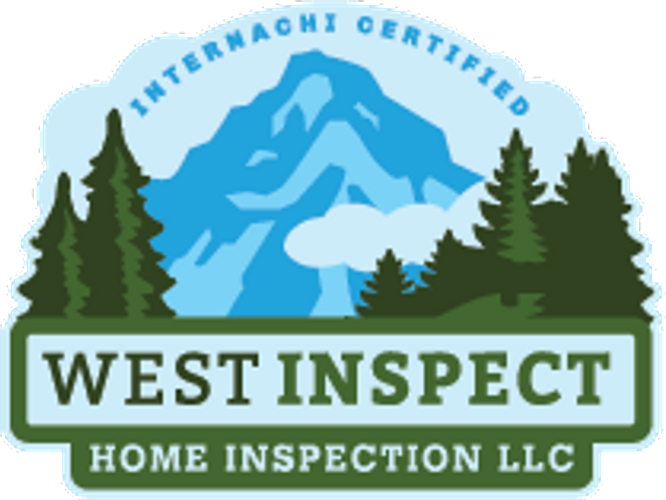
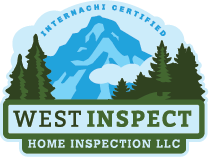
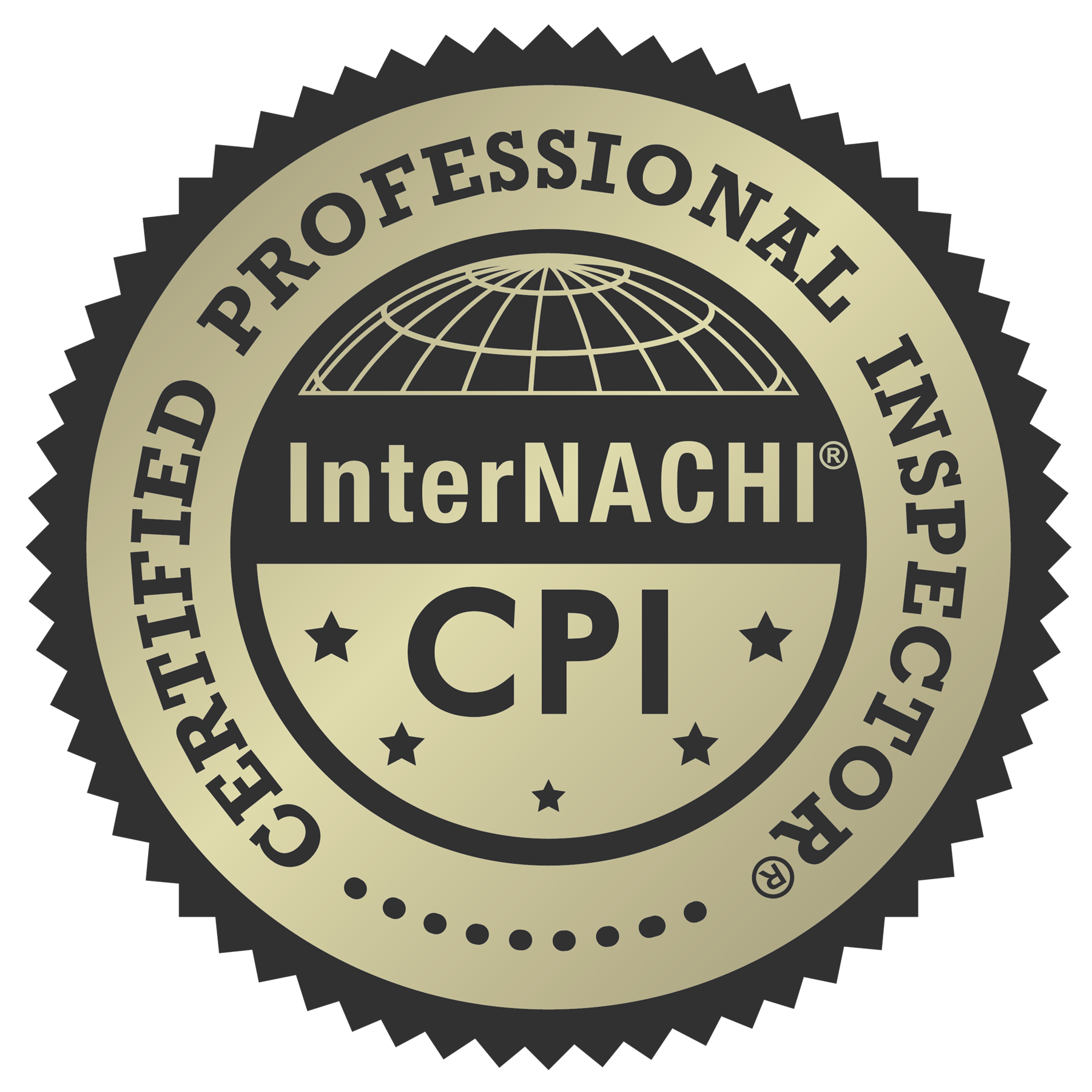
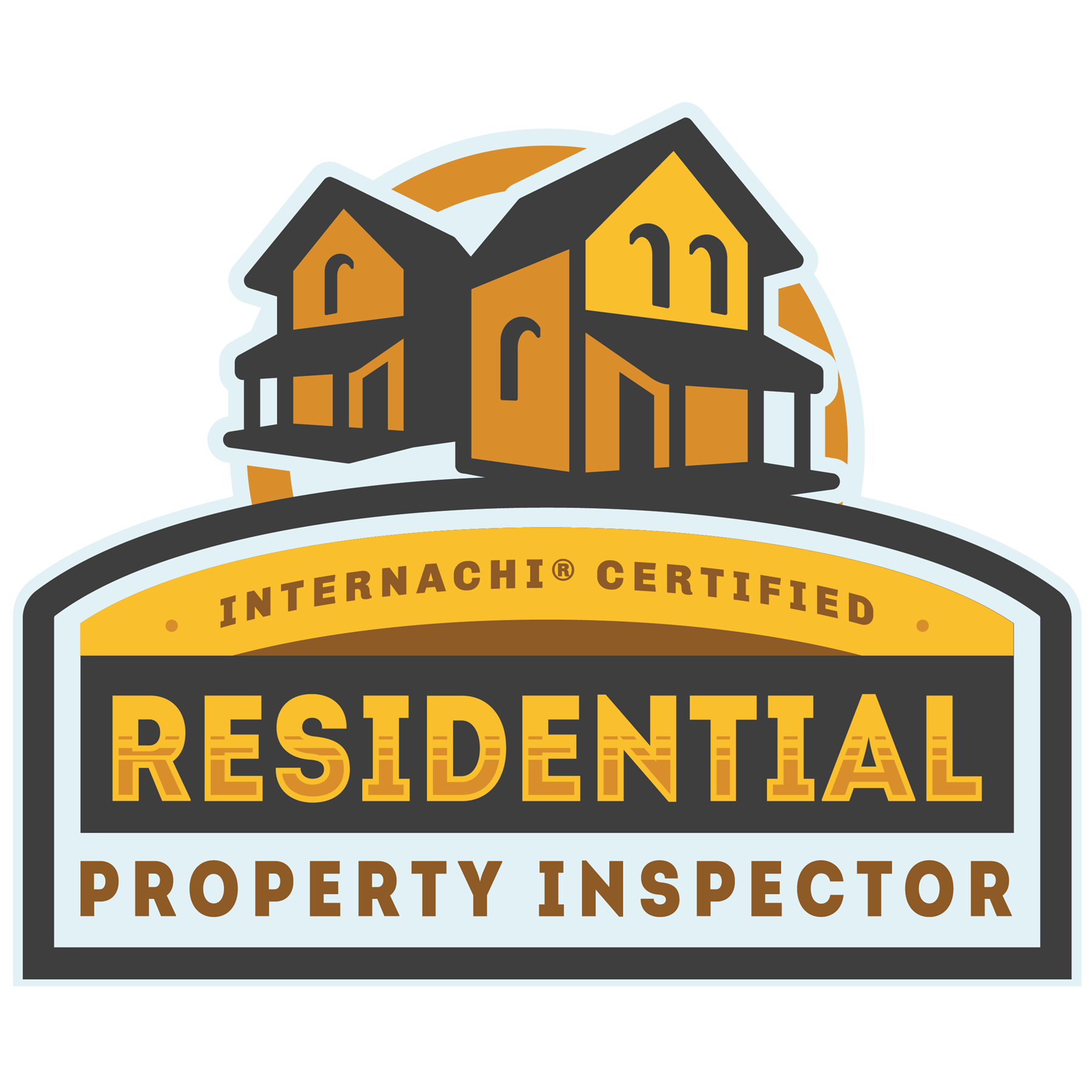
.jpg)

